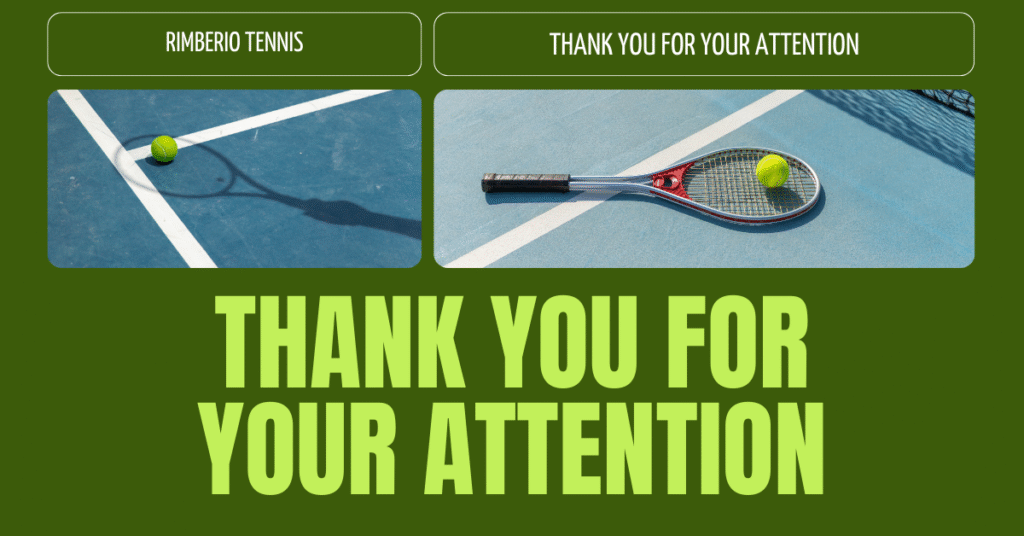Zen and the Art of Lawn Tennis: Transforming Tennis Coaching & City Policy
Discover how yoga centers and AI-driven tools are transforming Wimbledon’s tennis culture, player performance, and smart urban sports policy planning.
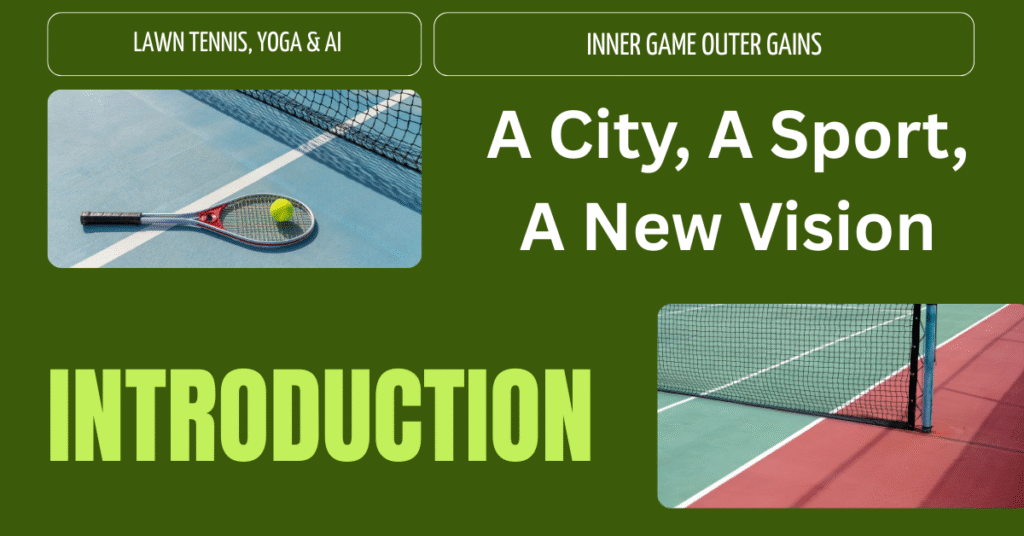
Introduction: A City, A Sport, A New Vision
Wimbledon is more than just the host of the world’s most prestigious tennis tournament — it is a symbol of excellence, tradition, and innovation in sport. As tennis continues to evolve, so do the ways in which players train, coaches strategize, and cities support athletic growth.
Today, two surprising allies are entering the Wimbledon tennis conversation: yoga and artificial intelligence (AI). Together, they offer powerful tools to enhance not only player performance, but also coaching practices and sports policy-making at the urban level.
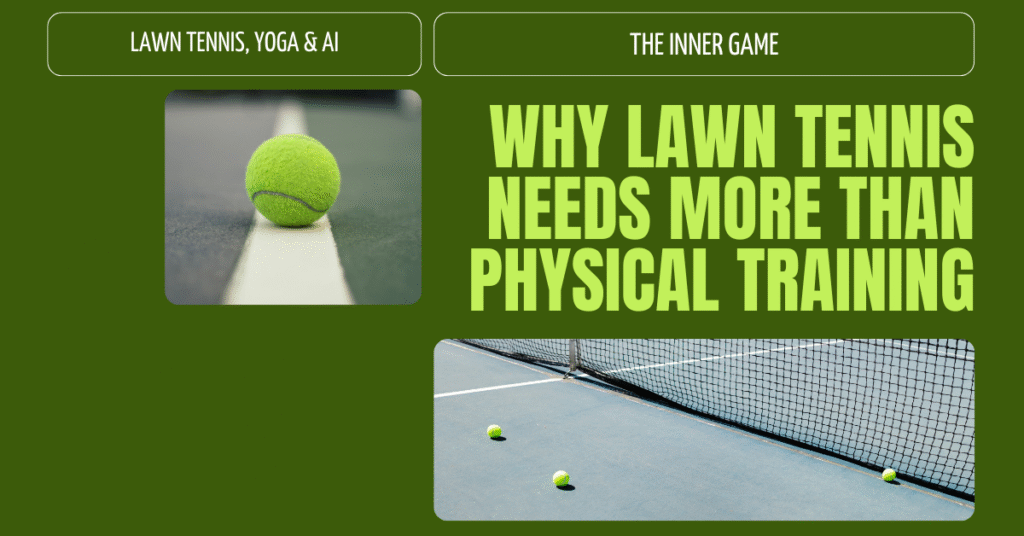
The Inner Game: Why Lawn Tennis Needs More Than Physical Training
Tennis is as much a mental game as it is a physical one. Players face enormous stress, frequent injuries, and the pressure of peak performance. Traditional coaching often focuses heavily on technique and endurance — but what about mental clarity, breath control, emotional resilience?
This is where it becomes a game-changer.
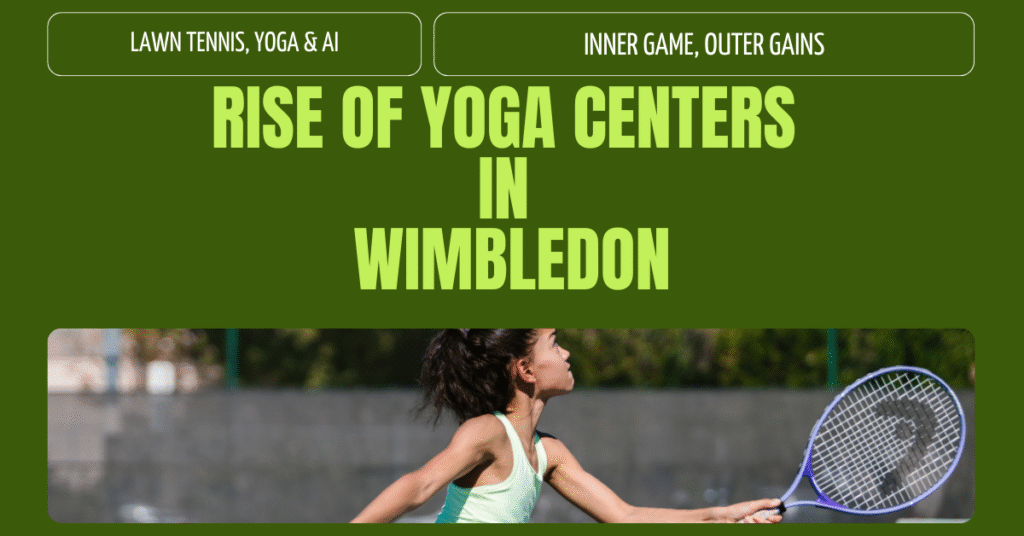
The Rise of Yoga Centers in Wimbledon
In recent years, Wimbledon has witnessed a quiet but steady growth of yoga studios, breathwork hubs, and mindfulness spaces. These centers offer more than lifestyle perks — they’re becoming vital for athletes looking for holistic tools to train their bodies and minds.
The principles of presence, breath awareness, and flexibility mirror exactly what elite tennis players need on the court: focus, flow, and adaptability.
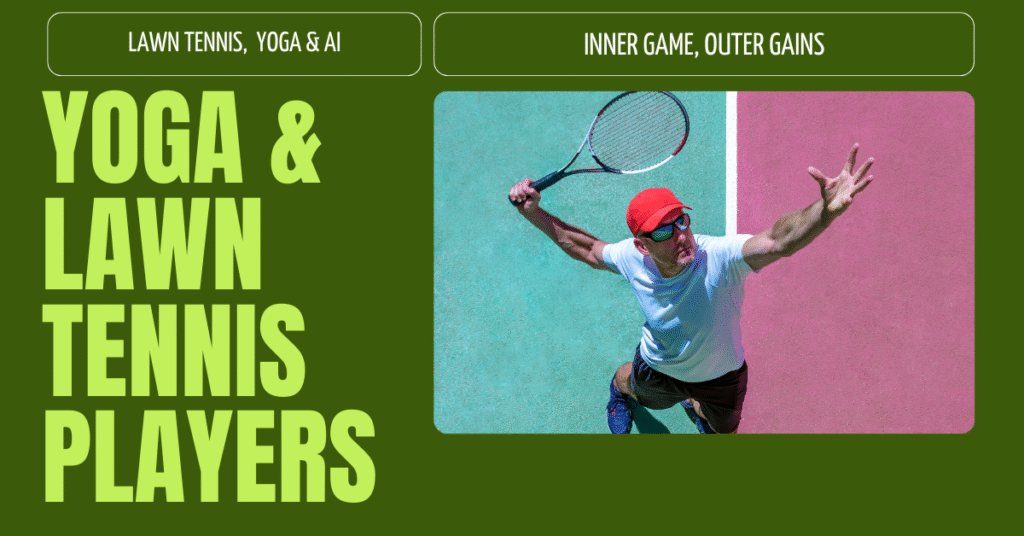
How Yoga Benefits Lawn Tennis Players
It isn’t just a wellness trend; it’s a performance enhancer for serious athletes. For tennis players, its benefits are specific and measurable:
- Enhanced flexibility and injury prevention
- Greater lung capacity through pranayama (breath control)
- Mental calm during high-pressure points
- Faster muscle recovery and improved sleep
- Increased proprioception (body awareness)
Athletes like Novak Djokovic and Andy Murray have long credited yoga and mindfulness as part of their training arsenal.
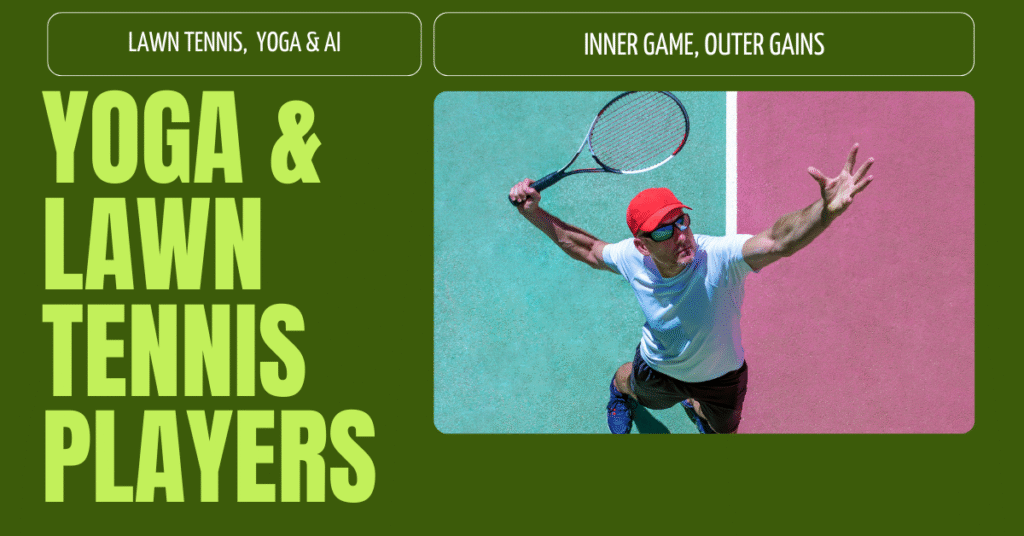
A Secret Edge
It’s not just players who benefit — tennis coaches can also tap into yoga to become better leaders. By practicing mindfulness and regulation techniques themselves, coaches can improve their communication, stay calm under stress, and create emotionally intelligent training environments.
Coaches who understand yoga are better equipped to guide athletes through the psychological highs and lows of competitive sports.
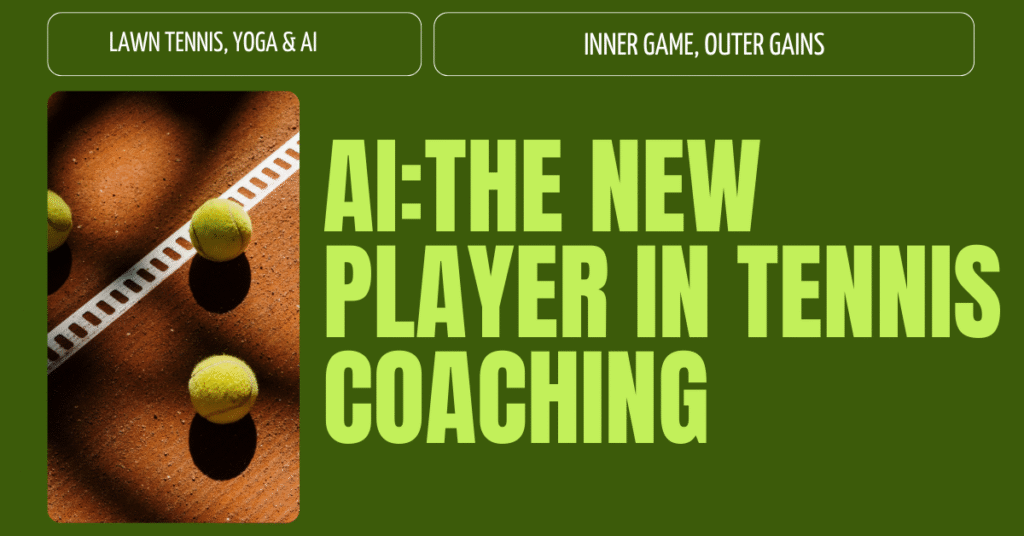
Enter AI: The New Player in Tennis Coaching
Artificial Intelligence (AI) is now being used in elite tennis for:
- Analyzing match footage
- Tracking biomechanical movements
- Providing predictive insights on player fatigue or injury
- Customizing training based on data patterns
But when integrated with yoga insights, AI can become even more powerful. Imagine using AI not just to track performance, but to recommend individualized practice and recovery routines based on each athlete’s nervous system and energy patterns.
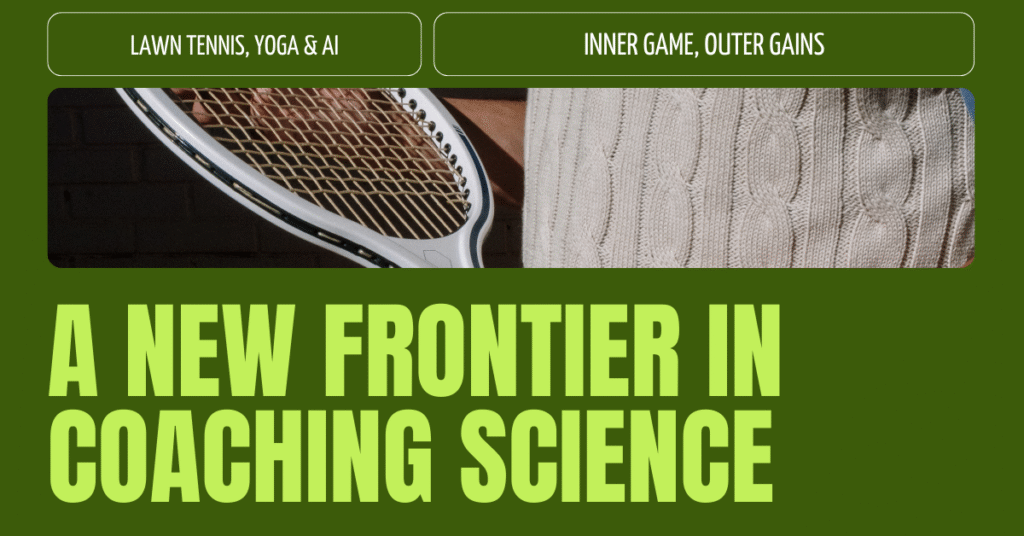
A New Frontier in Coaching Science
This fusion of internal intelligence (yoga) and external data (AI) represents the next big leap in sports training.
- AI can monitor cortisol levels, sleep cycles, and HRV (heart rate variability).
- Based on these metrics, yoga practices can be precisely tailored to reduce stress, improve sleep, or enhance agility.
- It moves tennis coaching from one-size-fits-all to truly bio-individualized training.
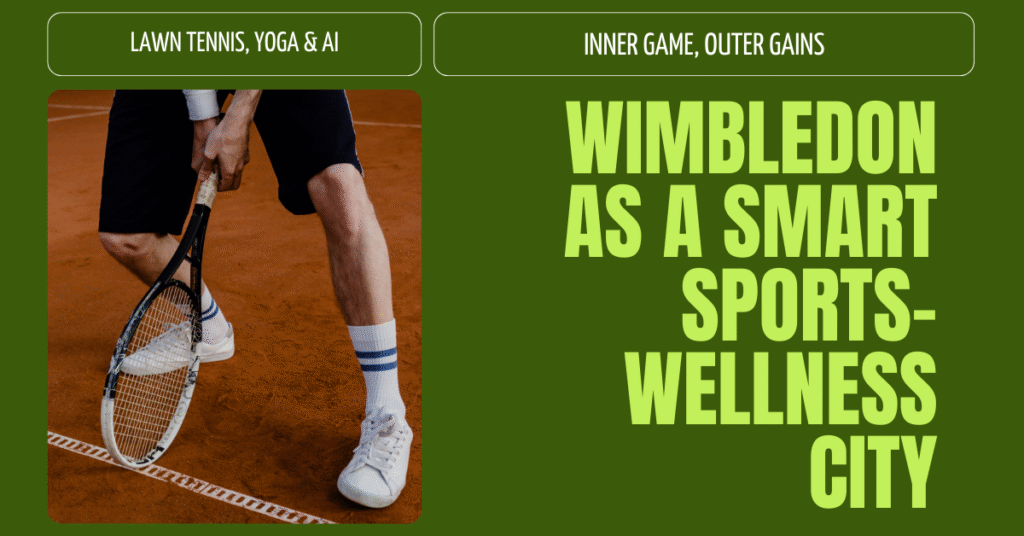
Wimbledon as a Smart Sports-Wellness City
Wimbledon is in a unique position to model a city-wide integration of sports, wellness, and technology.
Imagine:
- More yoga and breathwork centers near tennis academies
- Green zones for athlete recovery and nature therapy
- AI-powered urban planning to map high-demand areas for player services
- Smart infrastructure that supports year-round wellness-based athleticism
Wimbledon could set the global standard for sustainable, player-centric urban sports planning.
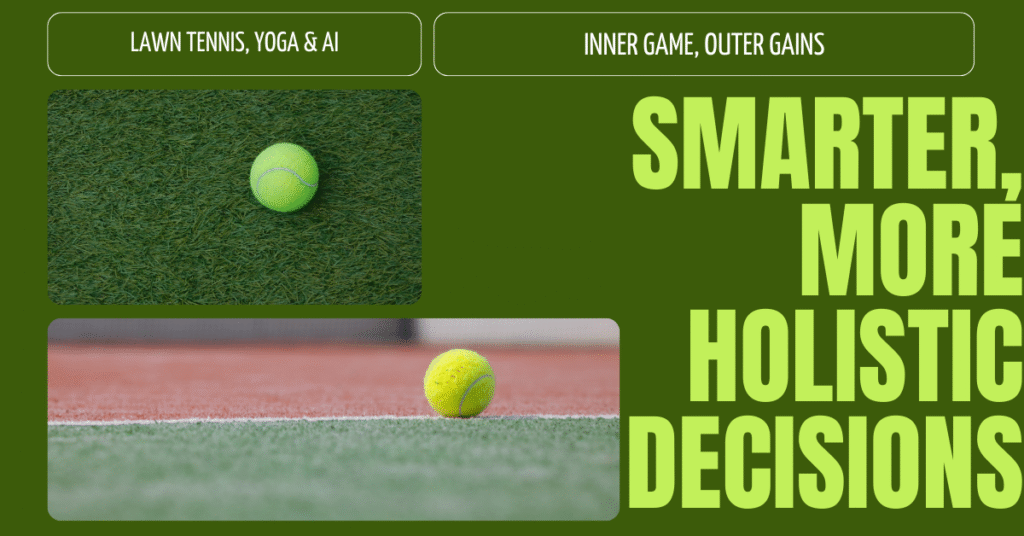
What Policy Makers Can Do: Smarter, More Holistic Decisions
Policy and city planning in Wimbledon can benefit from both AI data modeling and yogic philosophy.
- Zoning policies can encourage wellness-focused spaces near training centers
- Data from AI can inform the need for facilities, accessibility, and green recovery zones
- Yoga philosophy — which emphasizes balance, sustainability, and non-harm — can inspire more ethical and community-rooted sports development
Wimbledon doesn’t just need bigger stadiums — it needs smarter, softer support systems for athletes.
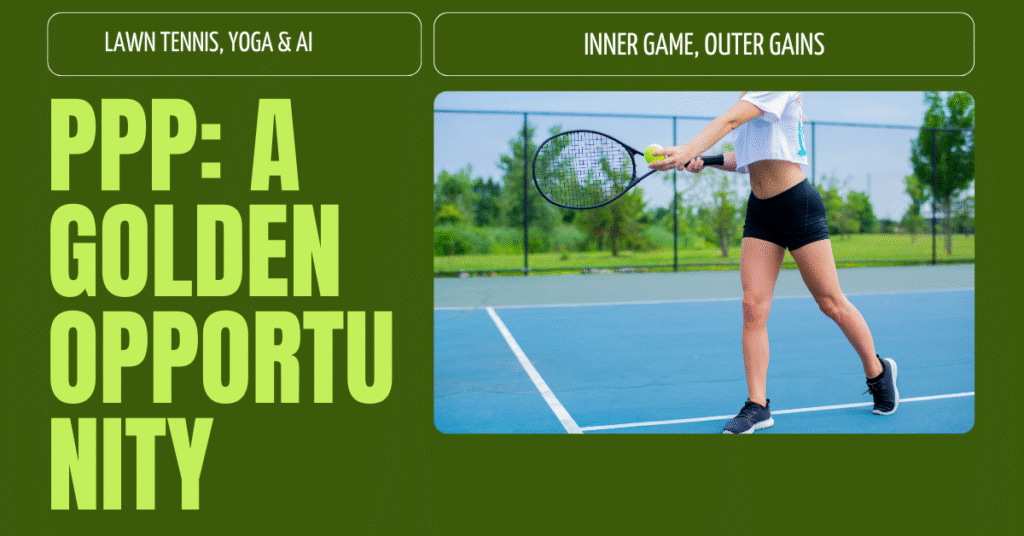
Public-Private Partnerships: A Golden Opportunity
Imagine if:
- Tennis clubs partnered with local studios
- City councils worked with AI startups to map athlete recovery trends
- Schools embedded yoga and mindfulness in early tennis education
These collaborations can transform Wimbledon into a case study in integrated sports wellness.
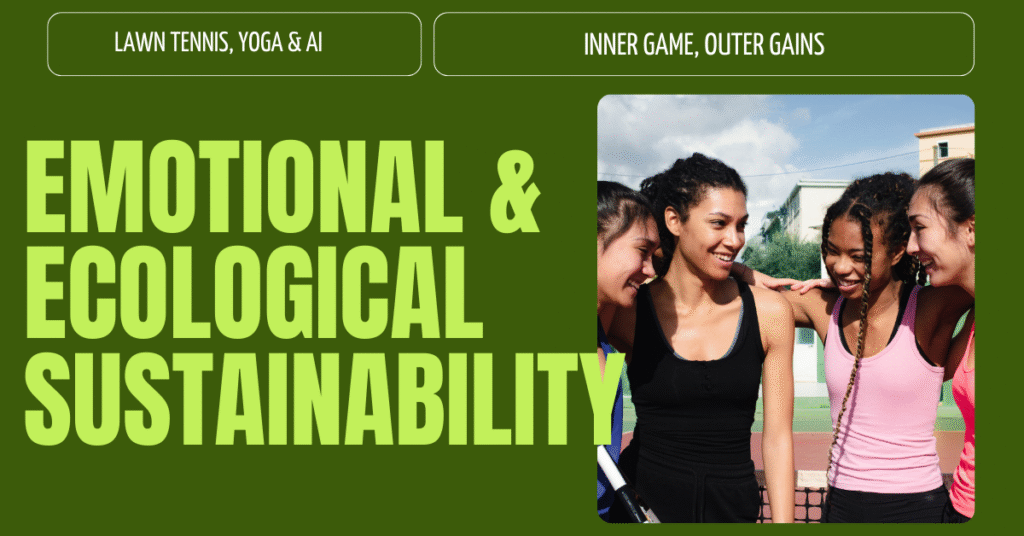
Emotional & Ecological Sustainability
Yoga teaches sustainability — not just in the body, but in how we live and build. Pair that with AI’s ability to track carbon footprints, crowd movement, and energy use, and you can create eco-conscious tournaments and training systems.
A Wimbledon that cares for its players’ inner environment and the city’s outer environment is the future we should be serving towards.
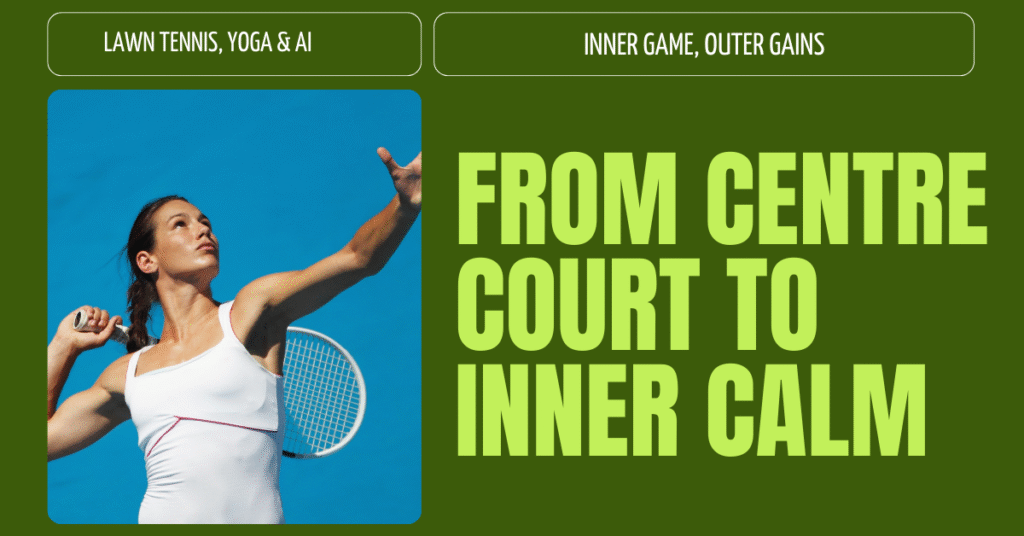
Conclusion: From Centre Court to Inner Calm
The future of lawn tennis isn’t just about faster serves or better rackets — it’s about balanced athletes, mindful coaches, smarter cities, and integrated ecosystems of health, technology, and tradition.
As Wimbledon continues to inspire the world, it has the opportunity to become not just a tennis capital, but a global leader in holistic, conscious sports development.
Let’s play the long game — with yoga as the breath, AI as the brain, and policy as the heart.
